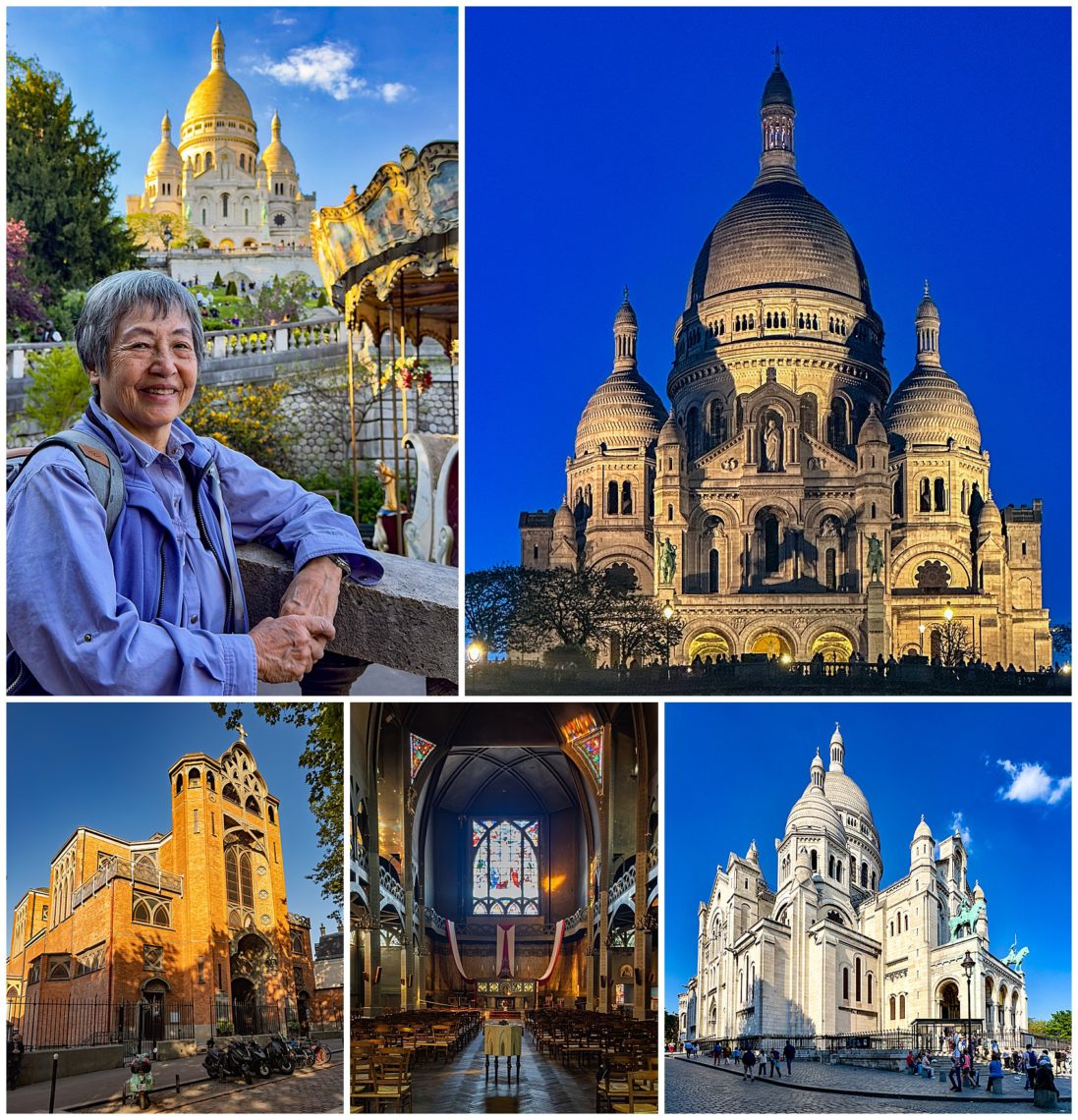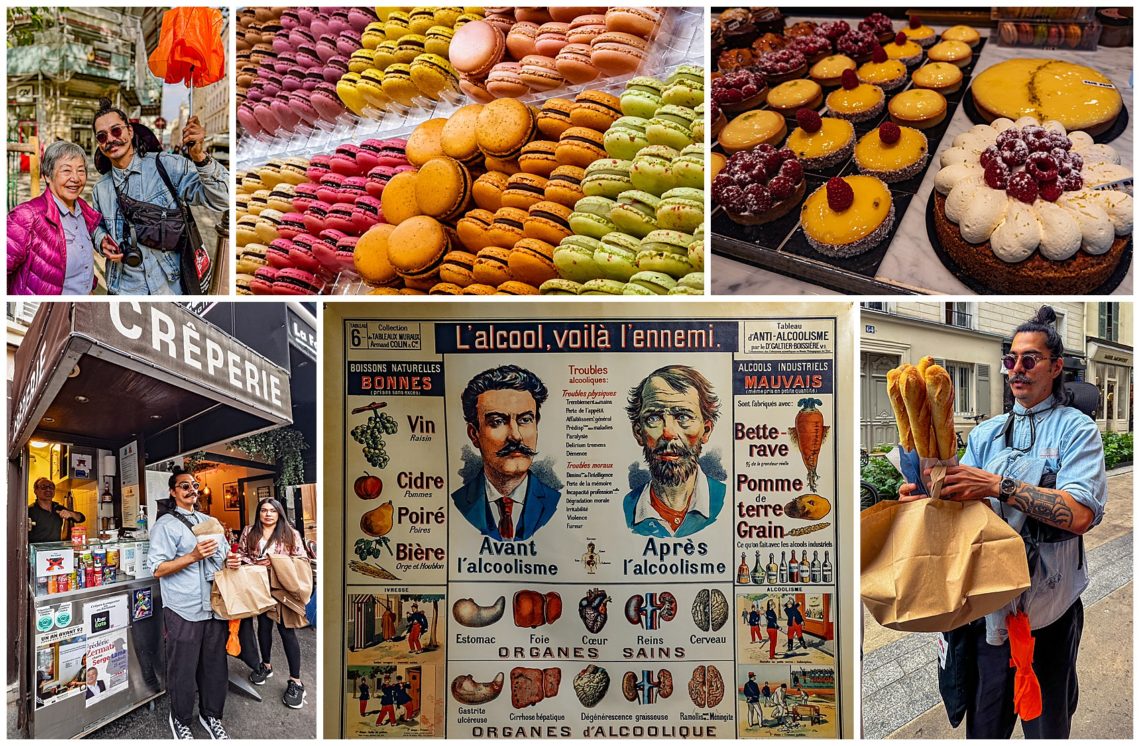
For us, Paris has always been a great stopover for a few days, enroute to somewhere else. This time, we’re enroute to Morocco and Southern France.
In Paris, there are 20 arrondissements, or districts, where one can stay, each with a distinctive personality. For this trip, we chose to stay in the Bohemian village of Montmartre, the 18th district, which is crowned by the Basilica Sacré Coeur. We stayed at the bottom of the village and took the Funicular to the top. Previously, we’ve stayed in the Latin Quarter, as well as the 8th arrondissement, the home of the Arc de Triomphe.

Montmartre is filled with street performers and street artists. In addition, the village is full of tourists this time of year, and it is not uncommon to see tour leaders with more than 20 tourists in tow. The crowds are gone early in the morning and evenings, so we get a chance to eat at the outdoor cafes without the parade of tourists. The hotel owner of Mom’Art reserved a table for us at her neighbor’s restaurant, L’Entr’Acte, a gem serving authentic French cuisine where the locals dine. Gille is a one man show, being simultaneously the chef, waiter, and bartender.

We had the pleasure of taking a “Secret Food Tour” in Montmartre. We both love food, so we jumped at the opportunity to learn more about French food and wines. When Parisians buy food, they go to high-end boutiques. The stops were mostly artesanal hole-in-the-wall spots we would never have discovered on our own, but they were clearly expert in their craft. The guide share their history, then introduced us to the food. We sampled macaroons and chocolates, a freshly made crepe (Evelyn had a sticky one with Grand Marnier), sampled classic French breads, many cheeses, and at the end, taken to a no name Speak-Easy establishment. There we were given an assortment of cold cuts, cured sausages and hams, cheese and wines. We learned how to tell a good baguette from a bad one. The poster above (bottom center) was from the 1930s, stating how bad alcoholism was — but only bad if from base foods not grown in France, so wine was considered good !
Marcel, our guide was quite a character. He was a former attorney who transformed himself into a professional photographer and film maker, as well as a food connoisseur.

These are some of the places we visited on our tour. Christophe Roussel was our chocolatier, and our first stop. I am not a large fan of sweets, but these were fabulous! Pain Pain was the bread store where our guide bought our baguettes. He can be seen holding a bunch of them in the prior photo block (lower right). He told us that the French never bend a loaf to get a piece of bread to eat it. Instead, they twist the bread to release the loaf. If the bread will not easily twist off, then it is a stale loaf and disdained by the French.
Our last stop was Les Petits Points Parisens. This was a “speak-easy” during the 1930s. It looked closed, but the guide had the key to open the door, and we all entered to sit around a ring of tables and enjoy cheeses, sausages, and a variety of wines. The right column above shows the labels from a couple of those wines.

Some fun photos from our stay. Burt and Evelyn are touring the city in vintage side cars around the narrow streets of Paris. It sounded cool, but in the end, we probably wouldn’t recommend it. They had no intercom to hear the description from the driver of the landmarks we saw, meaning we mostly drove past unknown buildings in unknown neighborhoods. The busking tap dancers (bottom center) were engaging at the metro entrance. we found the wall of love (lower right) at the Metro station in Montmartre as part of our walking tour.
